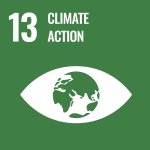Converting climate damaging emissions into raw material
The chemical industry has long been exploring various ways of turning the carbon dioxide gas (CO2) into a useful raw material that can replace fossil feedstock and reduce the industry’s carbon footprint. Developing this technology is especially important for the plastics industry as most plastic is made from petroleum.
The CO2 gas has one thing in common with petroleum: it contains the element carbon, a central building block for the chemical industry, and, unlike petroleum, it is an abundant raw material. Covestro has been working with partners from industry and academia on a number of projects to capture CO2 and use it to replace petroleum.
The technology they have developed allows to use CO2 to produce a polyol, a main component of polyurethane foam, which is used almost everywhere – from furniture to building insulation. The foam manufactured from this CO2-based polyol was first used in the production of mattresses. As a next step the polyol has been introduced as raw material in sports floorings. Most recently, the gas has found its way into car interior parts such as headliners and door panels. CO2 can also be used instead of oil to create insulating material for buildings and elastic fibres for stockings and other textiles.
In all its applications, the polyol used contains up to 20% CO2, replacing fossil fuels such as crude oil and reducing the amount of carbon dioxide in the air.
Associated SDG targets

Interesting reads